https://github.com/redhat-developer-demos/quinoa-wind-turbine
https://github.com/redhat-developer-demos/quinoa-wind-turbine
Last synced: 3 months ago
JSON representation
- Host: GitHub
- URL: https://github.com/redhat-developer-demos/quinoa-wind-turbine
- Owner: redhat-developer-demos
- Created: 2022-06-30T14:00:26.000Z (almost 3 years ago)
- Default Branch: main
- Last Pushed: 2025-03-11T17:12:12.000Z (3 months ago)
- Last Synced: 2025-03-11T18:24:29.728Z (3 months ago)
- Language: HTML
- Homepage:
- Size: 1.52 MB
- Stars: 22
- Watchers: 3
- Forks: 37
- Open Issues: 5
-
Metadata Files:
- Readme: README.md
Awesome Lists containing this project
README
# Quinoa WindTurbine Racer Demo
This project uses Quarkus, the Supersonic Subatomic Java Framework.
## Running the application in dev mode
Install first:
- JDK 17
- Maven
- Quarkus CLI
You can run your application in dev mode that enables live coding using:
```shell script
quarkus dev
```
## Deploy on Cluster with admin rights
### Setup
To run this demo you need **OpenShift >=4.10** with cluster-admin privileges.
### Quay.io
#### Account
Create an account on [Quay.io](https://quay.io) if you do not already have one.
#### Repositories
Create two repositories with public access (pull), you will use credentials in the next step to push container images.
From right-side menu, click **Create New Repository**
Create a new repository:
* quinoa-wind-turbine
Flag it as **Public Repository** and click **Create Public Repository**
#### Create secret
* Login to quay.io in the web user interface and click on your username in the top right corner.
* Select **account settings**.
* Click the blue hyperlink **Generate Encrypted Password**.
* Re-enter your password when prompted.
* Copy the password

### Setup OpenShift
Login to OpenShift Web Console to install prerequisites.
First, create a project for the demo:
```bash
oc new-project demo --description='wind-turbine-race'
```
*You can choose a different name, but then you have to update `argo/wind-turbine-app.yaml` before you deploy the app (see below in the **Flow** section).*
### Install Operators
#### OpenShift Pipelines
OpenShift Pipelines is provided as an add-on on top of OpenShift that can be installed via an operator available in the OpenShift OperatorHub. Follow these instructions in order to install OpenShift Pipelines on OpenShift via the OperatorHub.
From the left-side menu under **Administrator** perspective, go to **Operators**-> **OperatorHub**. In the search box, search for _pipelines_, then click to **OpenShift Pipelines Operator**:
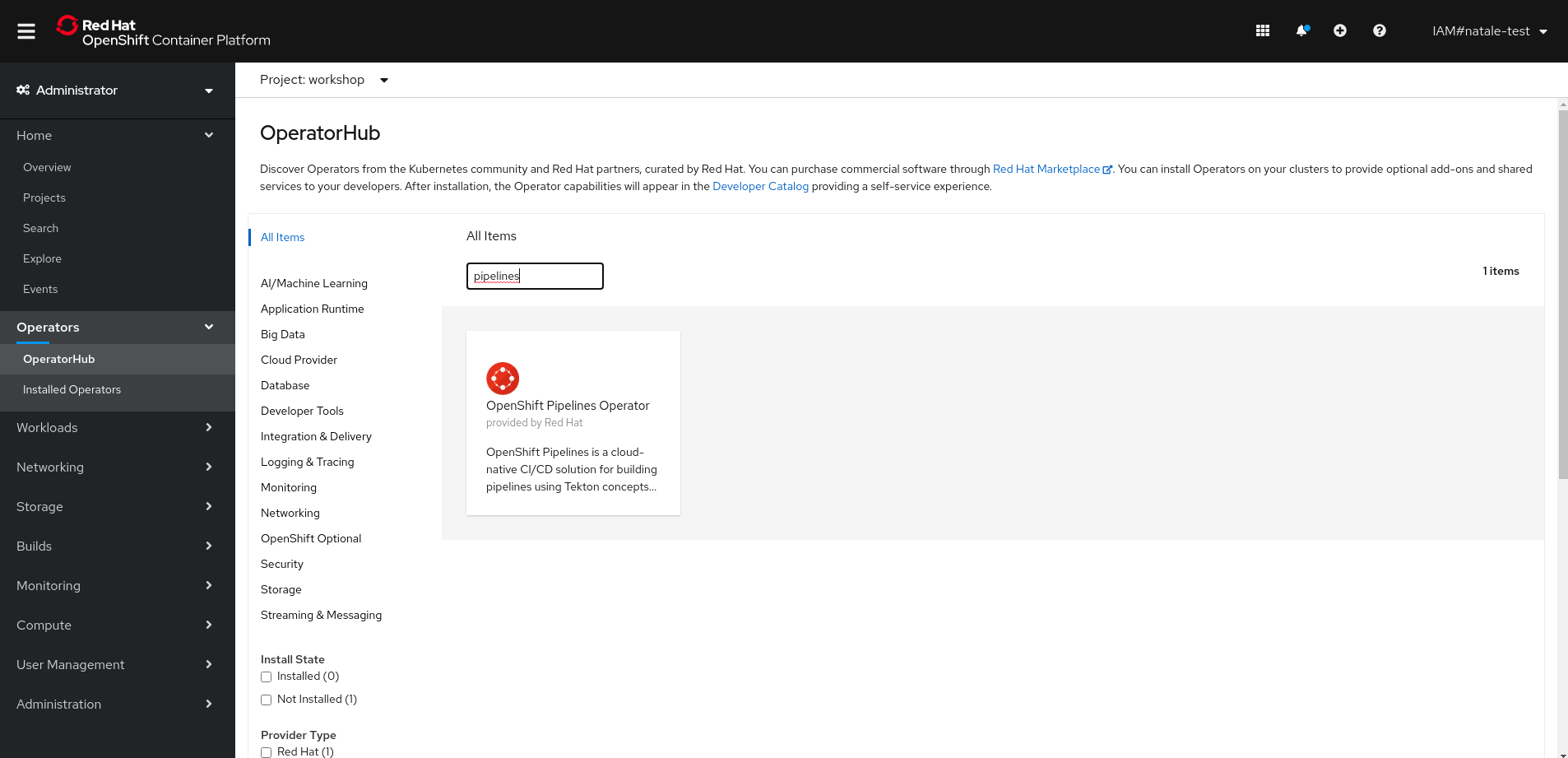
From the description view, click *Install* to review all installation settings.
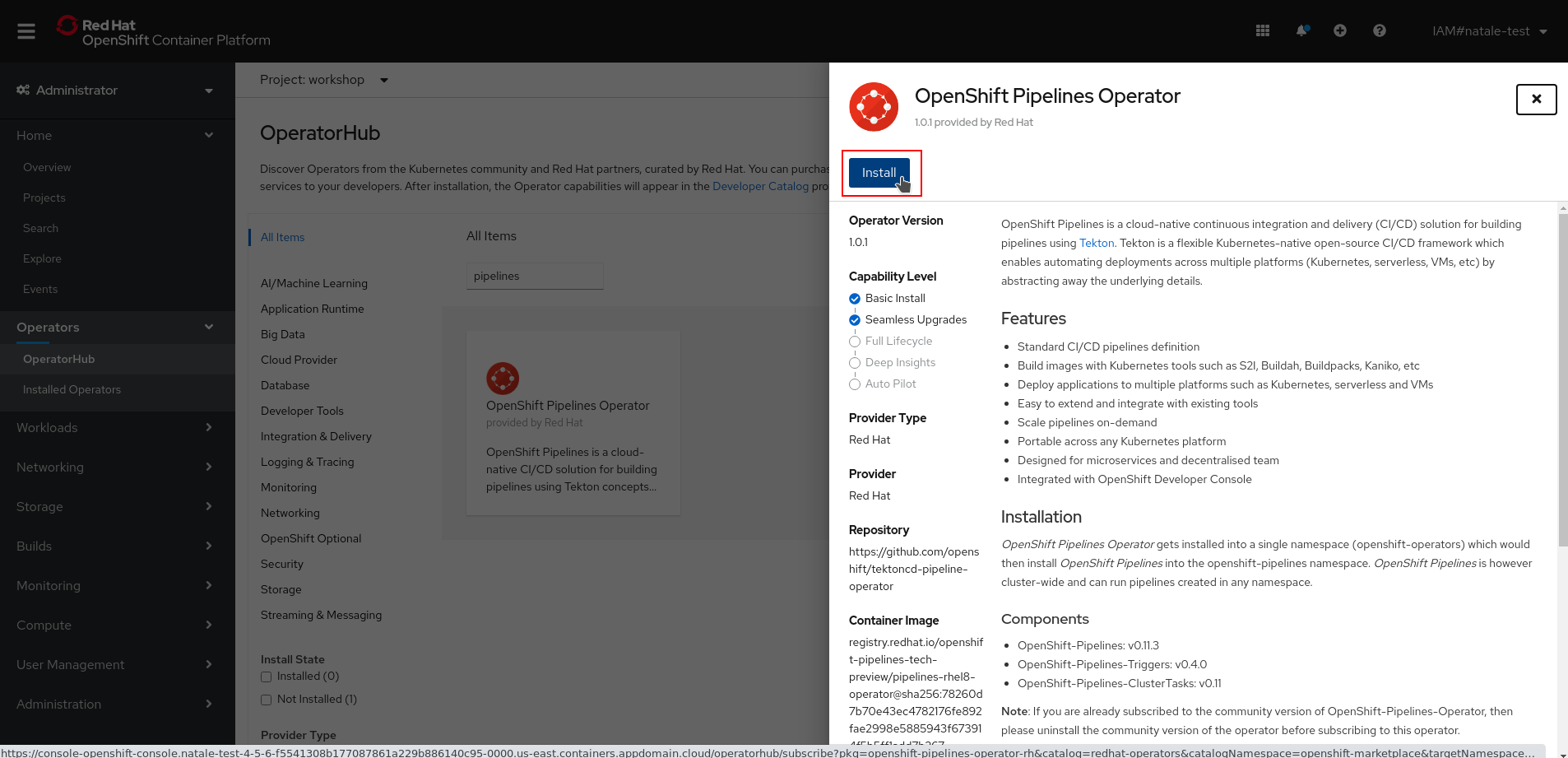
Ensure *Update Channel* is set to *stable* , and click *Install* to start installing the Operator.
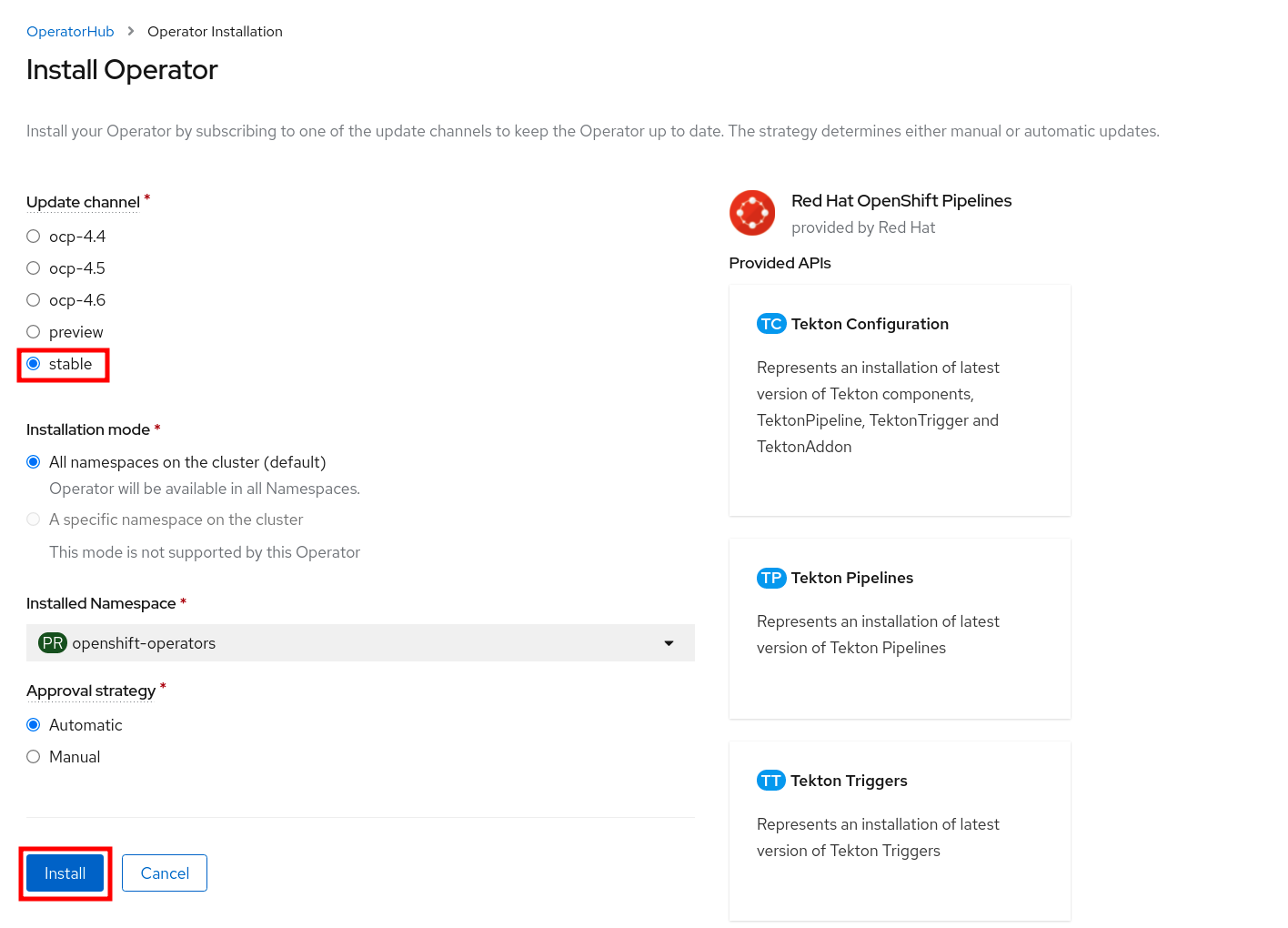
After few seconds, the installation should be completed with success and you can verify it looking at *Status* column, check if the status is *Succeeded*.
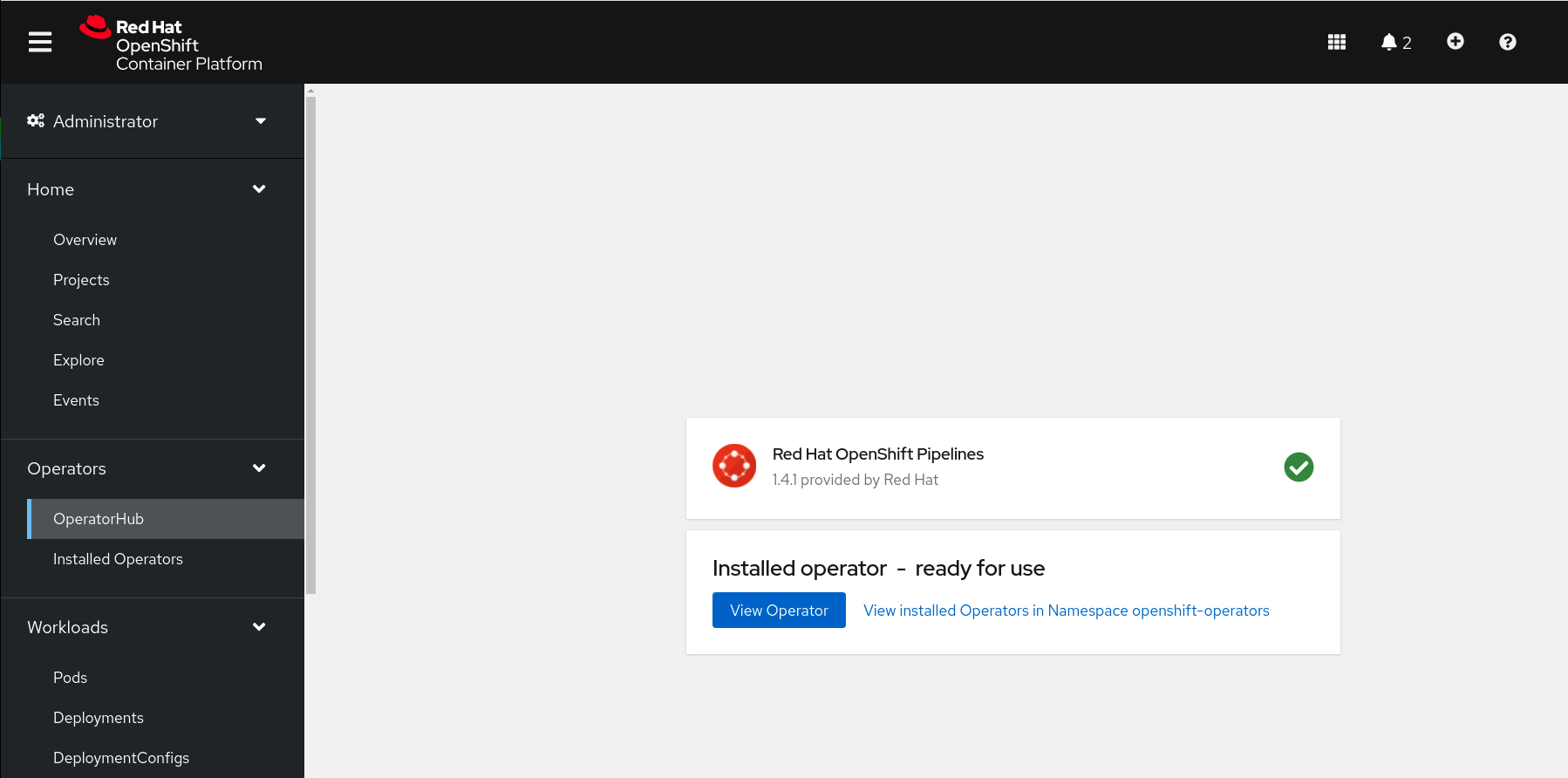
#### OpenShift GitOps
Log into OpenShift Web Console as a cluster admin and navigate to the **Administrator** perspective and then **Operators** → **OperatorHub**.
In the **OperatorHub**, search for *OpenShift GitOps* and follow the operator install flow to install it.
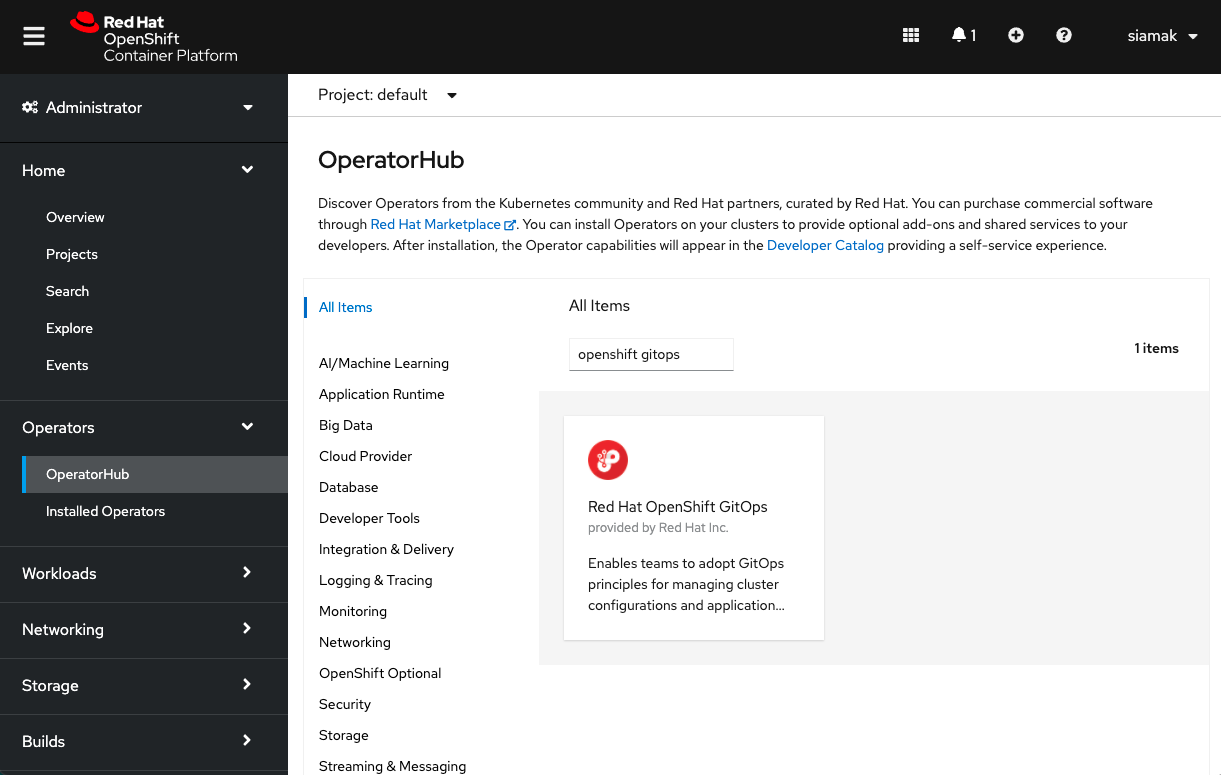
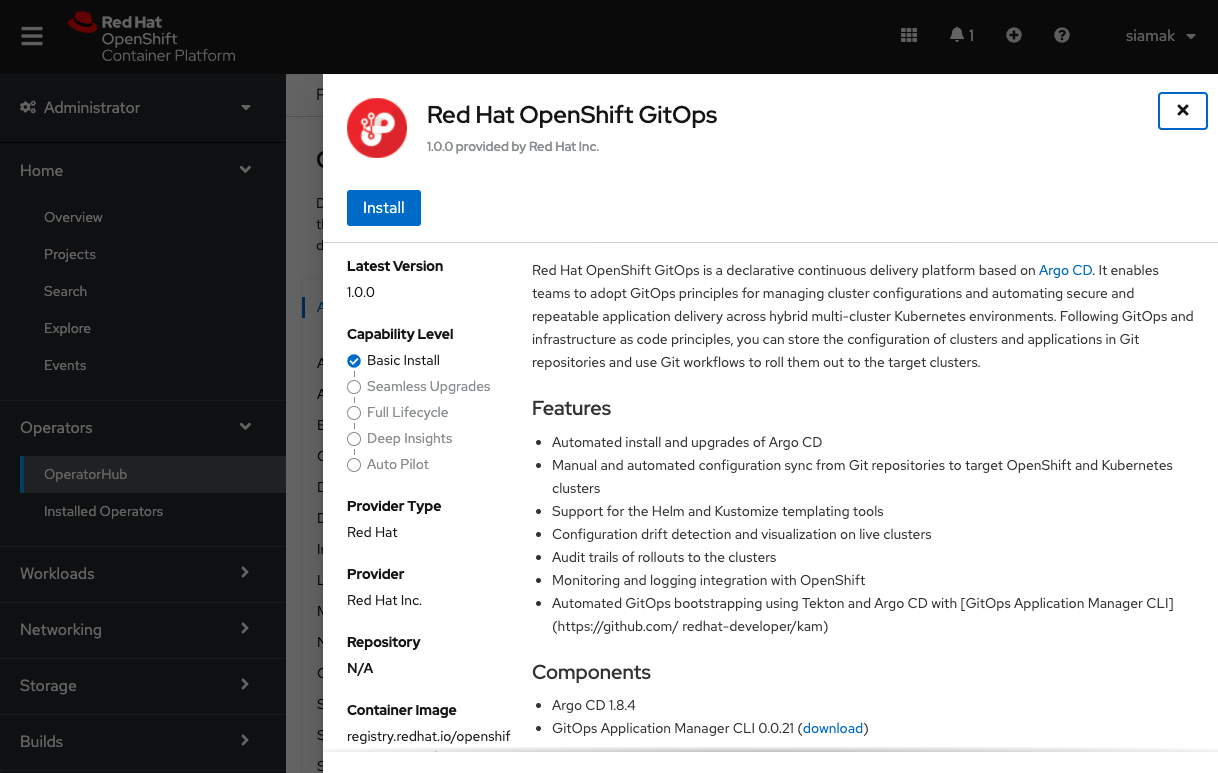
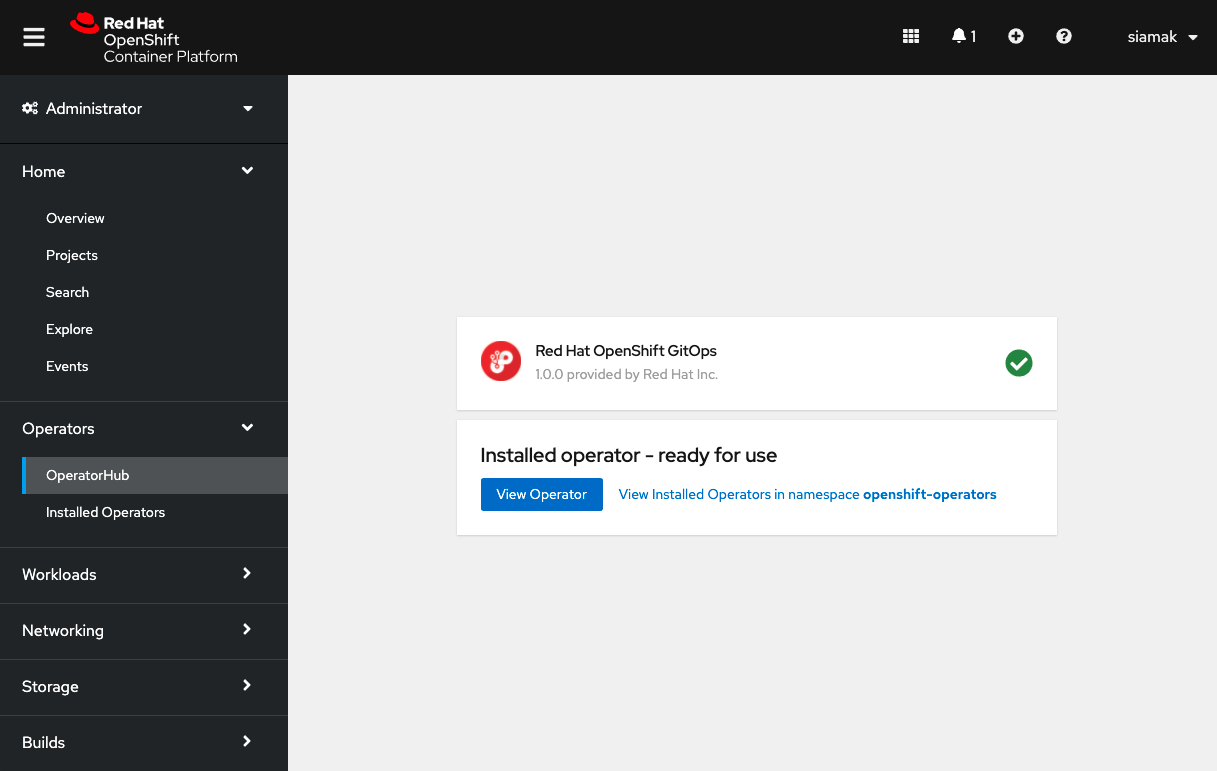
##### Add permission to Argo CD service account
**IMPORTANT** Give permission to the Argo CD service account to control the cluster:
```bash
oc adm policy add-cluster-role-to-user cluster-admin -z openshift-gitops-argocd-application-controller -n openshift-gitops
```
Once OpenShift GitOps is installed, an instance of Argo CD is automatically installed on the cluster in the `openshift-gitops` namespace and link to this instance is added to the application launcher in OpenShift Web Console.

##### Log into Argo CD dashboard
Click on Argo CD from the OpenShift Web Console application launcher and then log into your OpenShift credentials using the OpenShift Auth option.


#### AMQ Streams
Install AMQ Streams from OperatorHub and create a KafkaCluster named `my-cluster`
#### Infinispan
1. Create an infinispan cluster from the Web Console using the "Infinispan Helm chart"
2. Name it `infinispan`
### Flow
Create a Secret with your Quay.io credentials with the encrypted password you copied before:
```bash
oc create secret docker-registry quay-secret --docker-server=quay.io --docker-username= --docker-password=
```
Create a Secret with your GitHub Personal Access Token
```yaml
apiVersion: v1
kind: Secret
metadata:
name: git-user-pass
annotations:
tekton.dev/git-0: https://github.com
type: kubernetes.io/basic-auth
stringData:
username:
password:
```
Save it to a file with your credentials and create the secret:
```bash
oc create -f git-user-pass.yaml
```
Link Secrets to pipeline Service Account.
NOTE: Pipelines Operator installs by default a `pipeline` Service Account in all projects. This service account is used to run non-privileged containers and builds across the cluster.
```bash
oc secret link pipeline quay-secret
oc secret link pipeline git-user-pass
```
Fork this repo
In order to enable webhooks, fork this repo
Fork and clone GitOps [manifests repo](https://github.com/redhat-developer-demos/quinoa-wind-turbine-manifests)
```bash
git clone https://github.com//quinoa-wind-turbine-manifests
cd quinoa-wind-turbine-manifests
```
Create Tekton pipeline manifests
Change the GitOps repo to your fork:
```bash
sed -i 's/rhdevelopers/yourquayuser/g' tekton/pipeline-cached.yaml
sed -i 's/redhat-developer-demos/yourgithubuser/g' tekton/pipeline-cached.yaml
```
```bash
oc apply -f tekton/app-source-pvc.yaml
oc apply -f tekton/build-cache-pvc.yaml
oc apply -f tekton/git-update-deployment.yaml
oc apply -f tekton/maven-task-cached.yaml
oc apply -f tekton/pipeline-cached.yaml
oc apply -f tekton/triggerbinding.yaml
oc apply -f tekton/triggertemplate-cached.yaml
oc apply -f tekton/eventlistener.yaml
oc apply -f tekton/el-route.yaml
```
Update all references to quay.io with your repos for quinoa-wind-turbine references:
```bash
sed -i 's/rhdevelopers/yourquayuser/g' k8s/deployment.yaml
sed -i 's/redhat-developer-demos/yourgithubuser/g' argo/wind-turbine-app.yaml
git add .
git commit -m "update reference to quay and github"
git push
```
Create Argo CD Application to deploy the game
```bash
oc apply -f argo/wind-turbine-app.yaml
```
Start the Pipeline or edit `Config.js` to switch to V2:
```js
export const ENABLE_SHAKING = true;
```
### SSL (if the cluster doesn't have a signed certificate):
Let'encrypt (if the cluster doesn't have a signed certificate):
```bash
oc apply -fhttps://raw.githubusercontent.com/tnozicka/openshift-acme/master/deploy/single-namespace/{role,serviceaccount,issuer-letsencrypt-live,deployment}.yaml
oc create rolebinding openshift-acme --role=openshift-acme --serviceaccount="$( oc project -q ):openshift-acme" --dry-run -o yaml | oc apply -f -
```
If the cluster has a signed certificate, create a route with an "edge" tls termination.
### Install Kafka
- From the operator hub, install Strimzi operator.
- Create a Kafka instance named `my-cluster`
### Infinispan server
1. Create an infinispan cluster in the console using the "Infinispan Helm chart"
2. Name it `infinispan`
## When deploying from Quarkus
### Copy sandbox openshift resource file
```bash
cp src/main/kubernetes/openshift.cluster.yml src/main/kubernetes/openshift.yml
```
### Deploy
```bash
quarkus build -Dquarkus.kubernetes.deploy=true -Dquarkus.profile=openshift-cluster -Dquarkus.container-image.group=[project name]
```
### Update:
```bash
quarkus build -Dquarkus.container-image.build=true -Dquarkus.profile=openshift-cluster -Dquarkus.container-image.group=[project name]
```
### Delete deployed app
```bash
oc delete all -l app.kubernetes.io/name=quinoa-wind-turbine
```